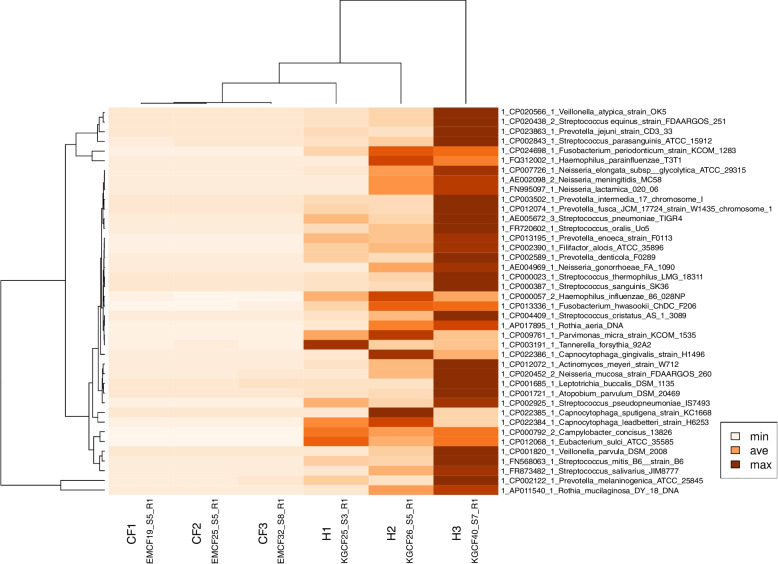Fig. 3.
Heatmap of cough swab metagenomes retrieved from healthy infants and infants with cystic fibrosis (CF). Samples from healthy (H1-H3) and CF infants (CF1-CF3) were taken from a published dataset [39]. The bacterial taxa found by Wochenende are listed on the y-axis. Color intensity indicates Bphc. The upper dendrogram visualizes the relatedness of the metagenomes. CF is a life-limiting monogenic autosomal-recessive trait. Mutations in the CFTR gene lead to impaired chloride and bicarbonate secretion across the apical epithelial membrane in exocrine glands. The lung is the most affected organ characterized by recurrent cycles of infection, inflammation and tissue remodeling. By adolescence, CF patients suffer from a high airway bacterial load with opportunistic pathogens, namely Staphylococcus aureus and Pseudomonas aeruginosa [40]. Our example compares the airway metagenome of healthy and CF infants during the first year of life [39]. As the basic defect is already operating since birth in the CF airways, mucociliary and cough clearance are impaired, leading to mucus plugging and ventilation inhomogeneity. During sleep microbes immigrate into the lungs by mucosal dispersion and microaspiration in all humans [41]. Thanks to mucociliary and coughing clearance, these microbes are continuously removed from healthy airways. Since these mechanisms are not properly functioning in CF, the cellular host defense is activated and alveolar macrophages and neutrophils immigrate into the lungs [42]. Hence during infancy one envisages the seemingly paradoxical phenotype shown in the heatmap that the bacterial load in the lower airways is higher in healthy infants than in CF infants. Children with CF are less trained by microaspirated commensals because their host defense by microbial killing compensates for the insufficient clearance mechanisms. This low abundance of commensals during infancy makes the microbial network in CF airways vulnerable to attacks by viruses, opportunistic bacteria and fungi [40]

